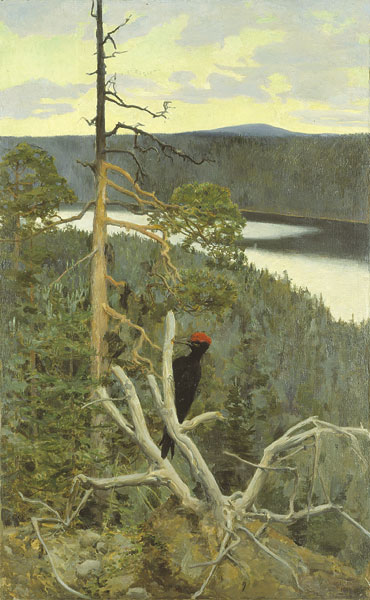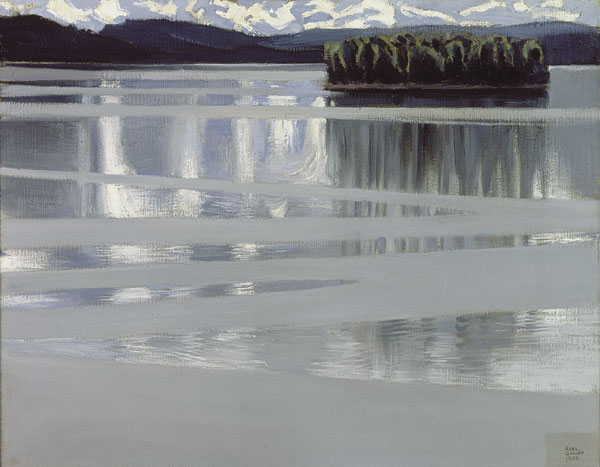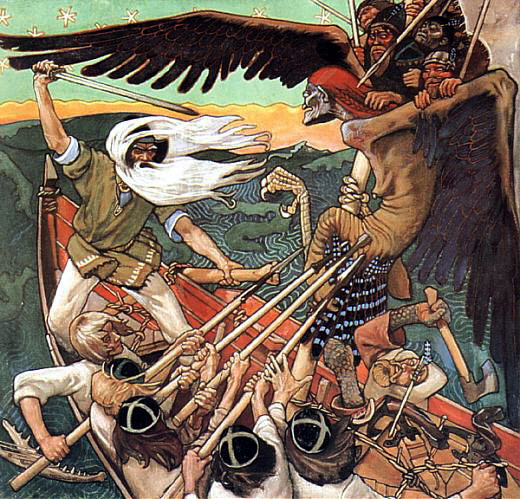Akseli Gallen-Kallela (1865 – 1931)
Get a Gallen-Kallela Certificate of Authenticity for your painting (COA) for your Gallen-Kallela drawing.
For all your Gallen-Kallela artworks you need a Certificate of Authenticity (COA) in order to sell, to insure or to donate for a tax deduction.
Getting a Gallen-Kallela Certificate of Authenticity (COA) is easy. Just send us photos and dimensions and tell us what you know about the origin or history of your Gallen-Kallela painting or drawing.
If you want to sell your Gallen-Kallela painting or drawing use our selling services. We offer Gallen-Kallela selling help, selling advice, private treaty sales and full brokerage.
We have been authenticating Gallen-Kallela and issuing certificates of authenticity since 2002. We are recognized Gallen-Kallela experts and Gallen-Kallela certified appraisers. We issue COAs and appraisals for all Gallen-Kallela artworks.
Our Gallen-Kallela paintings and drawings authentications are accepted and respected worldwide.
Each COA is backed by in-depth research and analysis authentication reports.
The Gallen-Kallela certificates of authenticity we issue are based on solid, reliable and fully referenced art investigations, authentication research, analytical work and forensic studies.
We are available to examine your Gallen-Kallela painting or drawing anywhere in the world.
You will generally receive your certificates of authenticity and authentication report within two weeks. Some complicated cases with difficult to research Gallen-Kallela paintings or drawings take longer.
Our clients include Gallen-Kallela collectors, investors, tax authorities, insurance adjusters, appraisers, valuers, auctioneers, Federal agencies and many law firms.
We perform Akseli Gallen-Kallela art authentication. appraisal, certificates of authenticity (COA), analysis, research, scientific tests, full art authentications. We will help you sell your Akseli Gallen-Kallela or we will sell it for you.

Akseli Gallen-Kallela was a Finnish painter who is best known for his illustrations of the Kalevala, the Finnish national epic. His work was considered very important for the Finnish national identity.
He was born Axél Waldemar Gallén in Pori (in Swedish Björneborg), Finland. His father Peter Gallén worked as police chief and lawyer. At the age of 11 he was sent to Helsinki to study at a grammar school, because his father opposed his ambition to become a painter. After his father’s death in 1879, Gallen-Kallela attended drawing classes at the Finnish Art Society.

In 1884 he moved to Paris, to study at the Académie Julian. In Paris he became friends with the Finnish painter Albert Edelfelt, the Norwegian painter Adam Dörnberger, and the Swedish writer August Strindberg.
In 1890 he married Mary Slöör. The couple had three children, Impi Marjatta, Kirsti and Jorma. On their honeymoon to East Karelia, Gallen-Kallela started collecting material for his depictions of the Kalevala. This period is characterized by romantic paintings of the Kalevala, like the Aino triptych and by several landscape paintings.
In December 1894, Gallen-Kallela moved to Berlin to personally oversee the joint exhibition of his works with the works of Norwegian painter Edvard Munch. In March 1895, he received a telegram that his daughter Impi Marjatta had died from diphtheria. This would prove to be a turning point in his work. While his works had previously been romantic, after his daughter’s death Gallen-Kallela painted more aggressive works like the Defense of the Sampo, Joukahainen’s Revenge or Lemminkainen’s mother.

For the Paris World Fair in 1900, Gallen-Kallela painted frescoes for the Finnish Pavilion. In these frescoes, his political ideas became the most apparent. One of the vipers in the fresco Ilmarinen Plowing the Field of Vipers is wearing the Romanov crown, and the process of removing the vipers from the field was a clear reference to his wish of an independent Finland.
He also painted the frescoes for the Jusélius Mausoleum in Pori between 1901 and 1903. The frescoes were soon irreparably damaged by white spots coming through, and Jusélius assigned the artist’s son Jorma to repair the frescoes, which he completed just before his death in 1939.
He officially finnicized his name to the more Finnish sounding Akseli Gallen-Kallela in 1907. In 1909, Gallen-Kallela moved to Nairobi in British East Africa (present-day Kenya) with his family, but he returned to Finland after a couple of years, because he realized Finland was his main inspiration. Between 1911 and 1913 he designed and built a studio and house at Tarvaspää about 10 km north of the centre of Helsinki.

In 1917, Gallen-Kallela and his son Jorma took part in the fighting at the front of the Finnish Civil War. When the regent, General Mannerheim, heard about this in 1918, he invited Gallen-Kallela to design the flags, official decorations and uniforms for the newly independent Finland. In 1919 he was appointed aide-de-camp to Mannerheim.
In 1925 he began the illustrations for his “Great Kalevala”. This was still unfinished when he died in Stockholm on 1931-03-07, while returning from a lecture in Copenhagen, Denmark. In 1961, his studio and house at Tarvaspää was opened as the Gallen-Kallela Museum which houses some of his works and research facilities on Gallen-Kallela.
Still wondering about a painting in your family collection? Contact us…it could be by Akseli Gallen-Kallela.
Reviews
1,217 global ratings
5 Star
4 Star
3 Star
2 Star
1 Star
Your evaluation is very important to us. Thank you.
